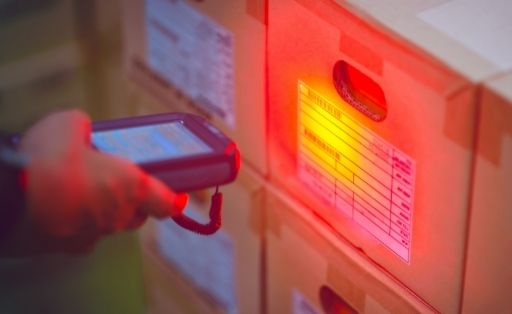Most businesses depend on controlling costs related to inventory to realize good profit margins. This task can be challenging, especially if you heavily rely on manual control processes and systems. Adopting a manual inventory system more often than not lead to human errors and wrong information. As a result, you may get inaccurate data, overstock, understock, or even have an obsolete stock.
Luckily, current technological advances can help manage and avoid the inefficiencies of manual inventory controls.
Each industry has its custom tech for proper inventory control, and as such, you should choose a technology that can work best for your business. For example, a manufacturing inventory system would be ideal if you are in the manufacturing sector. The system is specially designed so you can monitor end-to-end processes involved in producing goods, starting from the raw materials, work-in-process items to finished goods ready for distribution or selling. On the other hand, a warehouse management system can work well in a logistics and supply chain outlet. Even though the features in each tech solution may differ, the ultimate goal is the same- efficient inventory controls.
Read on if you want to learn more about the essential technologies to support you in your business’ inventory control process.

Contents
Radio Frequency Identification (RFID) Technology
RFID technology can tag your inventory items with a unique radiofrequency. With RFID, you can quickly identify and get information about an item or group of products for a particular period. For example, you can access the date and time of receipt, thus giving you the duration of the specific inventory in your stock.
RFID technology helps monitor stock movement and can be a good tool when analyzing stock re-order levels. Given that each stock item is tagged in the system, you can account for each and easily identify gaps due to theft, low stock, or misappropriations.
Overall, RFID technology simplifies stock taking, stock identification, and stock movement management. Whereas manual systems would still work, RFID can relieve your team of the intense and laborious process, increase their work productivity, and have better stock awareness.
Point-Of-Sale (POS) System
Sometimes if you don’t have a monitoring system at the front end of your operations, you can lose stock due to unchecked issues or sales. But, with an efficient POS system, you can integrate your sales points with your stock system. This allows you to monitor stock movements and improve accountability within the team.
From POS integration, you can pinpoint the stock that requires special attention in terms of movement and re-order levels. With such information, you can avoid over-stocking, leading to increased holding costs and potential spoilages. Furthermore, once your POS and stock systems are integrated, you get up-to-date information regardless of the day and time you generate reports. When you have accurate information available, it also speeds up your decision-making.
Warehouse Management System (WMS)
Remarkably, a WMS can be a stand-alone system, a module in an enterprise resource planning (ERP) system, or a supply chain management (SCM) suite. Whichever way you use it, it can help you optimize inventory processes like inventory tracking, shipping, receiving, and storage.
Additionally, its reporting features provide you with data to analyze the performance of the whole inventory process. Details like price averages and cycle counts for particular stock items can aid in determining holding cost implications and returns. You will also have a clearer view of your stock turnover, thus ascertaining better stock levels.
A WMS eliminates human errors and can generate better stock reports by automating the inventory process. This can also help streamline the accounts payable (AP) functions and improve vendor relationships.
Barcode System
Even though it may not be fully efficient on its own, it forms the base for other inventory management systems. For example, for a warehouse management system to fully provide a comprehensive tracking report, the inventory needs identifying barcodes. Adopting a barcode system enables unique identifying codes for each inventory item.
Integration of the barcode software into your system enables you to track your inventory and removes the human element within the inventory process. You can even customize barcodes according to your business operations. Inventory systems with unique barcodes prevent cases of unauthorized stock additions.
In short, the barcode system helps you identify stock levels and location, thus minimizing inventory losses.
Accounting Software
Given that some finance functions cross paths with inventory and vendor management, accounting software can help streamline some of these processes. Some inventory-related features of accounting software include invoicing, reconciliations, accounts payables, stock audits, purchase orders, and inventory reporting.
As a major module in your ERP system, accounting software can provide valuable information regarding a particular product. For example, it can help with purchase price comparisons and show relevant cost percentages. Furthermore, it can act as a control point to control purchase quantities, thus regulating stock levels.
Whenever you use accounting software to generate your inventory reports, you can identify inconsistencies in the inventory process. Such information can be vital to developing standard operating procedures for proper inventory control.
Label Printing Software
Label printing software allows you to custom print labels for your inventory as per your business’s requirements or industry regulations. You can generate batch codes and assign particular product groups according to your unique batch code procedures. For example, you can have deliveries coded as per month and date of delivery with unique identifying batch numbers.
Such batch numbers can help your team know which stock to prioritize whenever issuing or selling the products.
Conclusion
Even though you may encounter various challenges on inventory control, adopting multiple technologies and software can help reduce losses or spoilages.
With the above list of essential techs, you can improve the process and manage your costs better.
